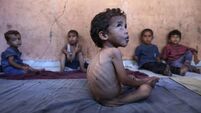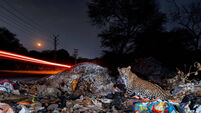Church at a crossroads: Bishops, priests, and lay Catholics speak out

Bishop of Cloyne William Crean with Monsignor Denis Reidy (left) and parish priest Fr Patrick Winkle (right), after celebrating mass to mark the 150th anniversary of St Mary's Church in Carrigtwohill, Co Cork. Picture: David Keane
The story of Jesus meeting a sceptical Samaritan woman at the well told in the Gospel of John is, for many Christians, a story of encountering Jesus and choosing his well as the source of eternal life.
As the Irish Church faces a crossroads ahead, with many big decisions to be made, Bishop William Crean of the Catholic Diocese of Cloyne wonders what wells sustain the Irish people today.











